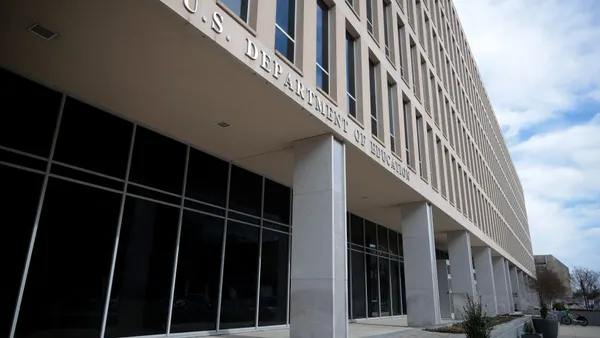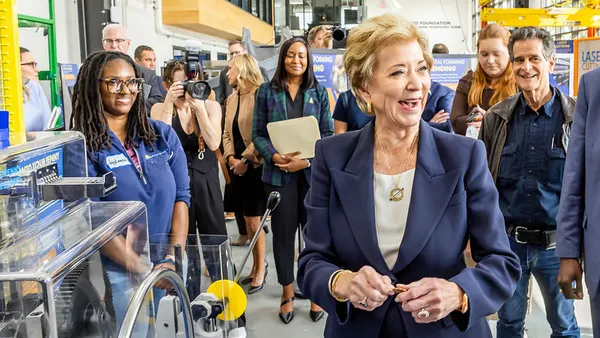Dive Brief:
- Whether students are moving from elementary to middle school or middle to high school, the transition process can be daunting as they navigate new buildings, new teachers and an increased workload.
- However, school leaders can help make the process smoother by providing students clear and consistent communication about what to expect.
- “It's a lot to take in for kids, but staff and other mentors from within the community can help them navigate and find their path,” said Nicole Paxton, assistant principal at Mountain Vista Community School, a pre-K-8 school in Colorado.
Dive Insight:
Offering multiple orientation opportunities is one of the key ways to make the transition smoother, according to Paxton, whose school has implemented several intentional supports for incoming 6th graders throughout the school year.
Mountain Vista Community School offers a “6th Grade Sneak Peek” day in the spring, a “Rise Up Rams” program on the last day of school, and multiple check-in days over the summer for families before the 6th-grade orientation on the first day of school.
These create opportunities for students and families to tour the building, meet their future teachers and learn about the school's academic and athletic programming.
“They need to hear the messages through lots of different people, through lots of different lenses, to be able to help them be successful,” said Paxton.
Similarly for La Faye Howard, assistant principal at Winston Churchill High School in Maryland, communication is the most crucial aspect of ensuring a successful transition from middle school to high school.
To ensure this success, Winston Churchill High School 9th graders have an advisory period once a month where they receive advice and information tailored to their grade level.
The 9th graders learn about how to manage the workload, balance all of their assignments and prepare for assessments. At the beginning of the school year, they receive an agenda book and learn how to keep track of their grades, homework, assignments and quizzes.
“Communicating early and consistently is key,” said Howard. “The message just doesn't happen once; it happens throughout their 9th grade year.”
At Brien McMahon High School in Connecticut, assistant principal LaShante James is in her fourth year leading “Freshmen Success,” an initiative that implements interventions and proactive strategies to support 9th grade students in completing the year on track — an important indicator of timely graduation, according to research.
Data monitoring is crucial to this initiative. James and her team use student attendance, discipline and GPA data to identify students in need of additional support entering 9th grade.James selects 120 students with those at-risk factors and separates them into cohorts of 60 students each.
These cohorts will have a team of core subject teachers — English, math, social studies and science — who will meet every other day to strategize how to support the students needing another level of support.
These students are also invited to participate in the school’s summer bridge program. When looking at quarterly data from a student participation feedback survey, James said, students who attended the summer program always outperformed their peers who didn’t.
“We’re constantly looking at data and the stories that come along with the data,” James said.
She also recommends visiting other schools or sending educators and leaders to education conferences where they can learn from each other.
“We're all doing something well, and we can learn from each other as educators and not necessarily reinvent the wheel,” James said.







 Dive Awards
Dive Awards





